Estimated reading time: 4 minutes
The wind has a bit of a bad reputation when it comes to fruit trees. It’s often blamed for fruit ending up on the ground.
But in fact, in many cases, it’s only the ripe or over-ripe fruit that ends up on the ground.
Related Articles
Providing frost shelter for fruit trees
Learn how to provide frost shelter for your fruit trees in spring to protect the flowers and fruit from damage.
Managing your fruit trees and frost
Learn about frost in your garden, how it may affect different types of fruit trees, and how to protect them by creating microclimates.
Fruit tree summer pruning pros and cons
Pruning your fruit tree in summer or winter can have different results, so we help you decide the best time for the job.
Healthy fruit that is not yet ripe will usually withstand surprisingly windy conditions perfectly well on the tree.
However, fruit that isn’t very healthy and was destined to fall off anyway can also be vulnerable to windy conditions.
This can apply to fruit that’s infected with diseases like Brown rot, or pests like Queensland Fruit Fly.
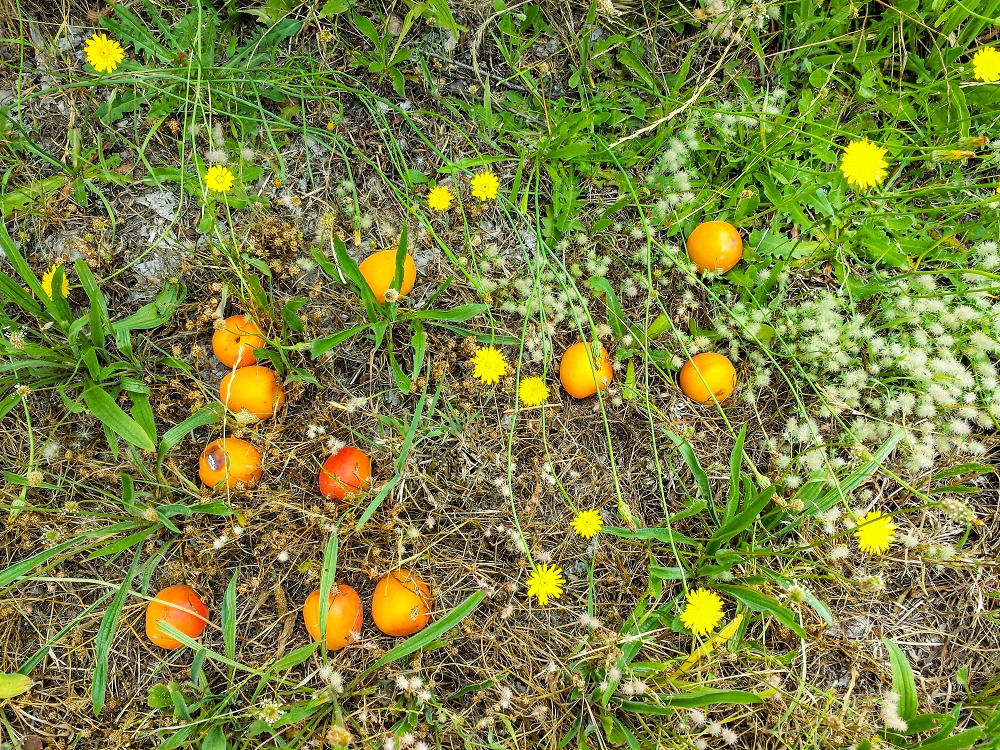
It’s quite annoying if the fruit you were about to pick in a couple of days hits the deck. Falling to the ground never improves the quality of fruit! It often splits when it falls or gets speared on a piece of grass or a stick.
Even if it survives intact, it can rapidly become full of ants and other critters.
How to protect ripe fruit from the wind
The key to protecting your fruit is to pick it before it can fall. But at the same time, you don’t want to pick it too early.
Ideally, every piece of fruit would be picked when it’s perfectly ripe, but not overripe.
That means it’s a very good idea to monitor your trees often when it’s getting close to the time you expect to pick the fruit.
Lots of varieties need picking multiple times. To give you a guide, we pick some varieties four times over a few weeks. We pick just the ripest fruit each time.
So it’s worth casting your eye over your tree every day or two and picking just those bits of fruit that are ripe. That way you’ve got a good chance of getting them before the wind does.
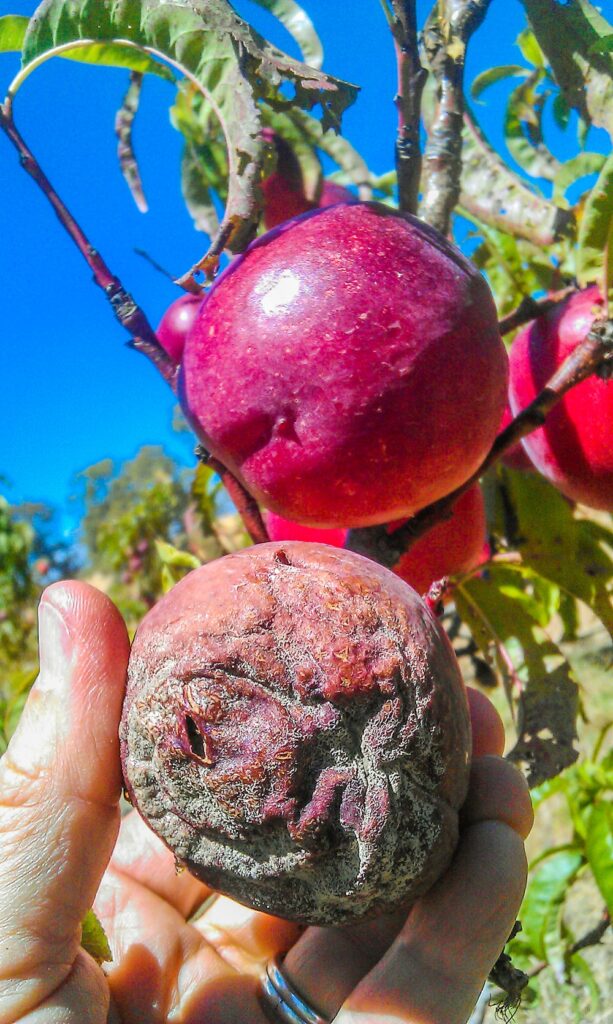
Advantages of the wind for your fruit trees
Wind does have advantages though. This is particularly true in rainy weather when it helps your trees dry quickly.
The dreaded Brown Rot fungal disease will only take hold in your trees if it experiences the right conditions. This includes the length of time the tree is wet, at the right temperature.
If the wind helps your trees dry faster it will reduce the window for infection. In that situation, it’s definitely on your side.
Planning to use the wind as a force for good
If you’re planning to plant fruit trees, or are making changes to your garden, take the wind into account. Try to choose (or create) a microclimate that will allow good air movement around and through your trees.
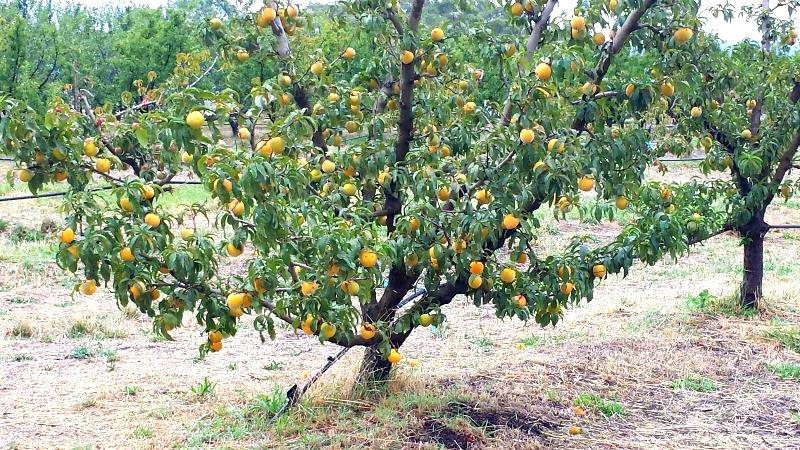
Make sure your fruit trees are pruned in an open shape. This allows the wind to easily get in the middle and dry the tree (and fruit) quickly after rain.
If you’re planting windbreaks, don’t aim to create a completely still environment for your fruit trees.
Picking fruit at the right time
Choosing the right time to pick your fruit can be tricky. One of the mistakes new growers often make is picking fruit too green or too ripe.
- If it’s too green it doesn’t taste very good, and won’t ripen off the tree.
- If it’s too ripe it’s much more likely to end up hitting the deck.
- Over-ripe fruit can also lose flavour and texture, and it doesn’t store nearly as well.
However, it’s not that hard once you know what to look for. Luckily each type of fruit has a bunch (pun intended) of indicators telling you the right time to pick.
Good record-keeping is also essential. Keeping track of the dates that you picked each variety helps you pick at the right time each year.
Managed properly, the wind can actually be your friend instead of your enemy!
Related Articles
Providing frost shelter for fruit trees
Learn how to provide frost shelter for your fruit trees in spring to protect the flowers and fruit from damage.
Managing your fruit trees and frost
Learn about frost in your garden, how it may affect different types of fruit trees, and how to protect them by creating microclimates.
Fruit tree summer pruning pros and cons
Pruning your fruit tree in summer or winter can have different results, so we help you decide the best time for the job.
Related Articles
Providing frost shelter for fruit trees
Learn how to provide frost shelter for your fruit trees in spring to protect the flowers and fruit from damage.
Managing your fruit trees and frost
Learn about frost in your garden, how it may affect different types of fruit trees, and how to protect them by creating microclimates.
Fruit tree summer pruning pros and cons
Pruning your fruit tree in summer or winter can have different results, so we help you decide the best time for the job.

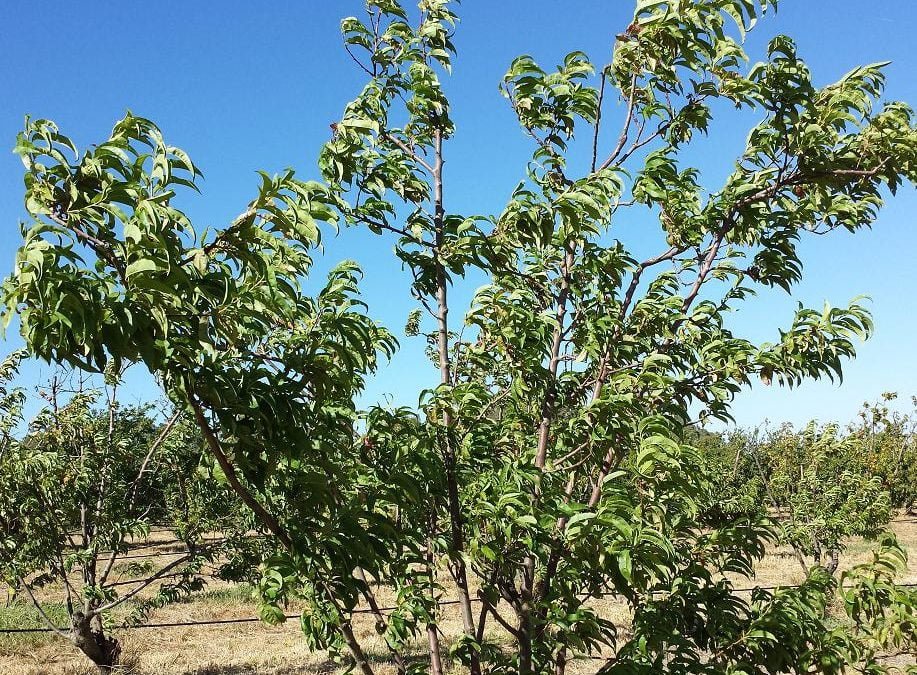



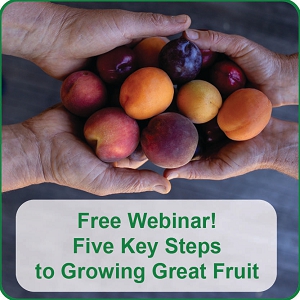
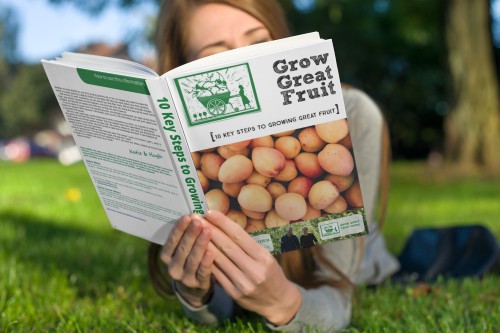
Hi i also have an old apple in a wind prone plain. only recently obtained property and have been gently trying to prune back without overdoing it with this old gal. not pruned for last 30 years at a guess. so watering and fertilizing and pruning has seen a bumper crop but wind was something i didnt factor in and now the laden branches have come to grief. one of two main branches has been 3/4 sheered off and is now dangling while holding on for dear life. do i surgically remove half this tree at this time (record high temps in central vic) or let her limp to a cooler clime before extraction.many thanks and kind regards paula
Hi Paula, what a pity for you, after all your hard work. The solution is probably in fruit thinning – did you do that this season? We recommend never leaving more fruit on any branch or lateral than it can bear the weight of – for this exact reason. If the broken branches are still attached you can try reattaching them – try to match up the split as tightly as possible, and then bandage/splint or do whatever you need to do to hold them together and see if the branch will re-heal. They often will, but if the wound is too big then best to remove it completely to reduce the risk of further tearing. No problem doing it in the heat, it will just help the wound to heal.